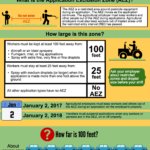Protections for Handlers
If you handle pesticides or pesticide-contaminated equipment/containers on an agricultural establishment, the Worker Protection Standard (WPS) applies to you. You are considered a pesticide handler under the law. You are also a handler if you enter pesticide-treated areas during a restricted-entry interval (REI) to do crop advisor/consultant tasks and/or you act as a flagger during pesticide applications. Read more.
Your employer is required to provide you with pesticide-related information, personal protective equipment, supplies for decontamination, and emergency assistance. This guide is not a complete summary of the required protections for pesticide handlers. To learn more, see the "How-to-Comply" manual at pesticideresources.org.
These rules are intended to protect you and your family from the risks of pesticide exposure.
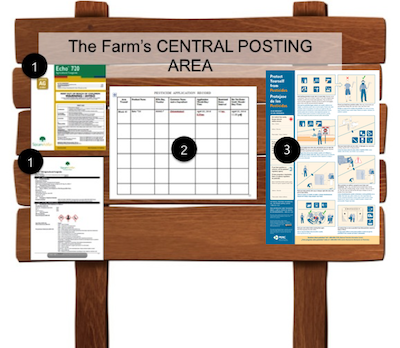
Your employer must provide you with information.
If you are employed by an agricultural establishment to do handler tasks, you must receive specific information and protections listed in this section.
- Before you begin handling pesticides or pesticide residues (handler activities), you must receive training about the risks of pesticide exposure, pesticide poisoning symptoms, first aid, and ways to protect yourself. The training must be provided in a language that you can understand. A qualified trainer must be present to answer your questions. This training must be provided once a year. You can request a record of your training within two years, and take it with you to other jobs.
- Your employer must tell you where to find the following things on each establishment where you work. They should be freely accessible during work hours:
- A pesticide safety poster at a central location,
- Records about pesticides that were applied within the last 30 days
- Safety data sheets (SDS) for pesticides that were applied within the last 30 days, including information about the specific health and safety risks, and
- Water, soap and single-use towels for hand-washing and decontamination.
- If you also do worker tasks on the establishment, your employer must tell you which fields or areas you must avoid when entry is restricted because of pesticide use. They might tell you verbally at the beginning of your shift, or they might put the information in your work order(s) for the day.
- Your employer must give you information from the pesticide label before you handle that pesticide. Specifically, you must read or be informed about the product label information that applies to the safe handling of the pesticide.
- Your employer must provide you with instructions about how to operate pesticide application equipment safely, before you begin to use the equipment.
- If you have to enter pesticide-treated areas before the REI has expired to do allowable early-entry workers tasks, your employer must give you information about what to do, and how long it should take. They must also provide the personal protective equipment required for early-entry workers by the pesticide product label. This is the equipment you must wear when entering the pesticide-treated area.
View More
View Less
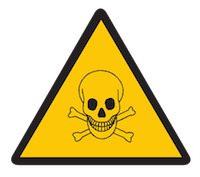
Your employer will provide protections.
- Your employer must ensure that you are at least 18 years old before you handle pesticides.
- Each day, before you use equipment to mix, load, transfer or apply pesticides, your employer must make sure that the equipment is inspected for leaks, clogged nozzles, worn or damaged parts. The employer may assign this task to others, but they must make sure it gets done, and any faulty equipment is repaired or replaced before it is used.
- Your employer must provide the personal protective equipment that is required by the pesticide product labeling. It must be clean, and in proper working condition. This does not include your pants, shirt, shoes, and socks.
- Your employer must provide a clean change of clothes, such as one-size-fits-all coveralls, to put on if your clothes are contaminated and need to be removed right away.
- When personal protective equipment is required by the pesticide product labeling, your employer must take steps to prevent heat-related illness. This may include giving you more frequent breaks for cooling down and/or shifting work hours to cooler times of day.
- When you use a pesticide that has a skull & crossbones symbol on the front panel of the label, your employer must ensure that you are monitored visually or by voice communication at least every two hours. Text messages are not sufficient.
- When you use a fumigant (gas) pesticide indoors, or in any enclosed space, your employer must make sure you have continuous voice or visual contact with another handler stationed immediately outside the enclosed space. That handler must have a full set of personal protective equipment (PPE), as required by the pesticide label, just in case they need to rescue you.
- Your employer must take several steps before you wear a respirator that is required by a pesticide label. You must receive a medical evaluation, a fit-test to make sure your respirator fits properly, and training. Fit-testing and training must be repeated once a year.
View More
View Less
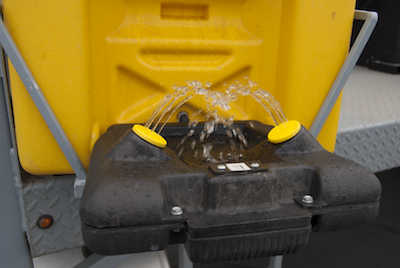
Your employer must provide supplies for washing off pesticides.
- Wherever you handle pesticides, your employer must provide water, soap, and single-use towels within a 1/4 mile of where you're working, or at the nearest vehicular access. They must also be supplied at any mixing/loading site, and in the location where you remove personal protective equipment (PPE).
- There must be at least three gallons of water per pesticide handler, measured at the start of the work period, for washing off pesticides. Clean, running water meets the requirement. Otherwise, a tank of water may be provided.
- Hand-sanitizer is no substitute for soap and water because it doesn't wash the pesticide residue away. It rubs the pesticide residue into the skin.
- When you are using a pesticide and the label requires eye protection, your employer must provide an emergency eye-flushing station at the mixing/loading site. It must provide enough water to allow for 15 minutes of eye-flushing in case of emergency. Also, you must carry some water with you (at least one pint) for emergency eye flushing in the field.
View More
View Less
You and your employer must protect others from pesticide drift.
- When applying pesticides, you both must ensure that no pesticide residue comes in contact with anyone, either directly or through drift, unless the person is appropriately trained and equipped and involved in the application.
- The establishment owner/operator must make sure that their employees stay away from pesticide application equipment while pesticides are being used. The distance is 100 feet (30.5 meters) for air-blast sprayers and aerial applications. The distance varies depending on the type of application.
- When the application equipment comes close to the boundaries of the agricultural establishment, or if you encounter workers or bystanders coming close to the application, it is your responsibility to suspend the application if people come too close to the application equipment. Remember, the distance varies depending on the type of application. You can resume the application when you can ensure that they won't be contacted by the spray.
Your employer must make sure you get help if you are exposed to pesticides and show symptoms of pesticide exposure.
- Your employer must make sure you have transportation to a medical facility.
- The location of a nearby emergency medical facility must be on the WPS Safety Poster at a central location.
- Your employer must provide the medical team with information about the situation, the name of the pesticide, and the pesticide safety data sheet(s).
Your employer is not allowed to retaliate against you for following these rules.
- Your employer must not fire you, threaten you, or punish you in any way for following these rules.
- You may refuse to participate in activities that would violate the WPS.
- You may provide information to government authorities during WPS investigations.
- You may report WPS violations to the appropriate authorities.
- Look for the phone number on the WPS Safety Poster at a central location.
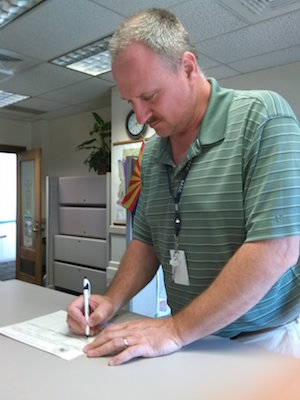
Your employer must provide documents if you ask within two years.
- You may request a record of your WPS pesticide safety training.
- You may request pesticide application information and safety data sheets. It must be provided within 15 days.
- If you would rather not ask for the records yourself, you can designate a representative, someone you trust, to request them for you. You will have to sign your name and provide your dates of employment to request this information.
You can make a difference for yourself, your coworkers, and your family.
- Learn all you can about pesticide risks to health and safety from the training materials and safety poster.
- Prevent unnecessary exposure to pesticides.
- Recognize the symptoms of pesticide poisoning.
- Avoid taking pesticide residues home with you.
- Remember that children and pregnant women are especially sensitive to the effects of pesticides.
View More
View Less

Regulatory Guidance
Browse brief guides about protections for workers and handlers, the AEZ, posting, PPE, exemptions, training, respirators, and more, in English and Spanish.
